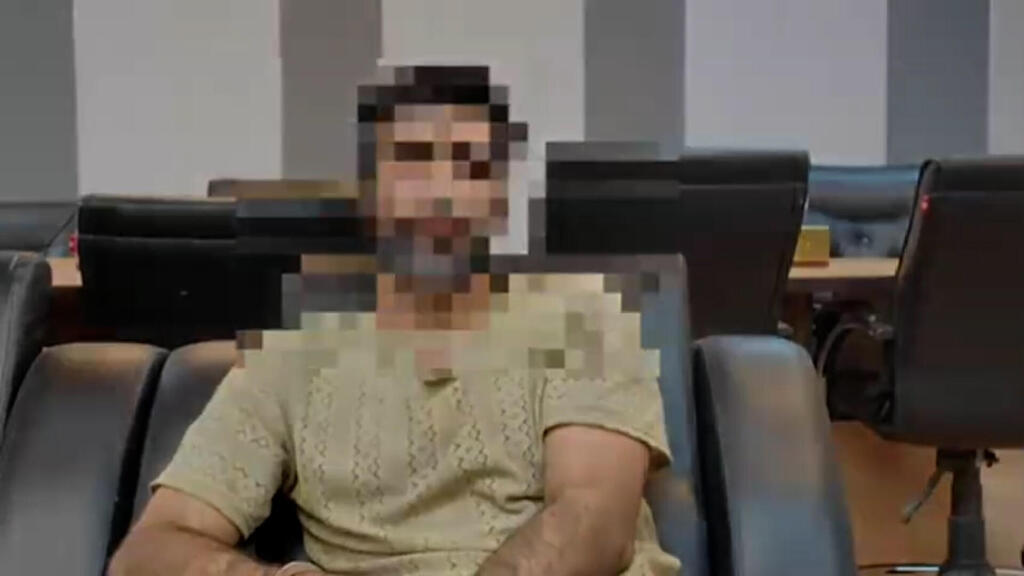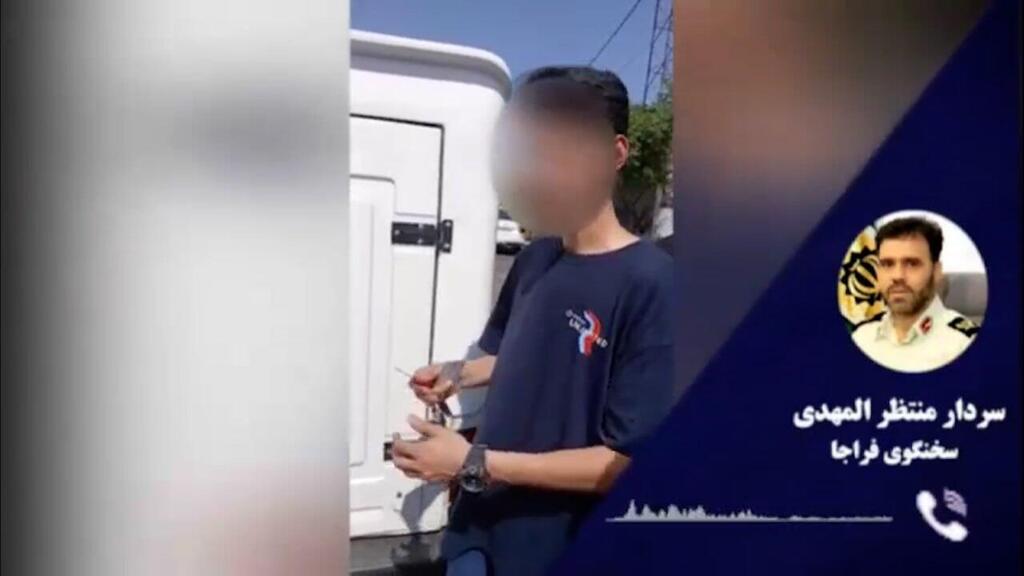In recent days, Iranian state media have been saturated with dramatic claims of uncovering “agents,” “collaborators with the Mossad,” and “terrorist cells working for the Zionist regime.”
These reports—often accompanied by heavily edited videos and blurred images—portray what the regime describes as unprecedented intelligence successes by its security forces. However, observers question their credibility, viewing them as part of a propaganda campaign amid recent Israeli intelligence operations.
On Friday, Tehran’s police announced the arrest of an alleged Mossad agent accused of sending coordinates of Iran’s air defense systems to a foreign intelligence service via WhatsApp. Earlier in the week, authorities in the western province of Hamadan claimed to have detained around 30 individuals for suspected ties to Mossad and support for the Israeli regime.
Other reports across Iranian media include the discovery of alleged weapons labs, vehicle seizures with loitering drones, and arrests of supposed online “incitement teams.” On Tuesday, a video aired purporting to show the “interrogation of a Mossad agent” confessing to espionage charges, though his face was obscured and the setting heavily staged.
In a rare public notice, Iran’s Supreme National Security Council issued a warning on Friday evening, calling on anyone who may have been “deceived by the Zionist regime”—knowingly or not—to surrender to police stations, Basij bases, or intelligence offices by Sunday. Those who comply and hand over drones, weapons, or other gear would receive amnesty. After that deadline, the statement warned, anyone caught with espionage equipment or arms would be treated “as a fifth column and enemy collaborator during wartime,” facing the harshest punishment.
Get the Ynetnews app on your smartphone: Google Play: https://bit.ly/4eJ37pE | Apple App Store: https://bit.ly/3ZL7iNv
The Tasnim News Agency claimed Thursday that authorities in Tehran intercepted a truck carrying loitering munitions and arrested the alleged Mossad operative responsible for transporting it. A video released alongside the report showed crates in the back of the vehicle, said to contain drones.
The crackdown has extended to the public sphere. On Monday, the Iranian government issued guidelines on how civilians can identify “suspicious locations” believed to house terror operatives. The signs included frequent visits by unfamiliar young people, permanently shuttered windows, unusual nighttime activity, and excessive use of sunglasses or face coverings “without justification.”
Footage released by Mossad from the initial strike on Iran
(Video: Mossad)
On Wednesday, state media reported the arrest of six women in Kermanshah Province labeled as “spies,” and another arrest of a “Mossad agent” in Kurdistan Province, allegedly found with surveillance equipment. That same day, five additional alleged spies were reportedly arrested in Lorestan Province.
One of the more dramatic claims came Sunday, when Iranian outlets said a “senior Mossad spy” was captured trying to flee across the western border near Baneh, thanks to “local vigilance.”
Israel has not officially responded to the flurry of Iranian reports. However, Israeli officials familiar with the situation suggest the campaign is a strategic effort by Tehran to project control and strength in the face of recent Israeli operations. “This is fabricated propaganda,” one Israeli source said. “The Iranians are trying to manufacture fake intelligence victories.”






